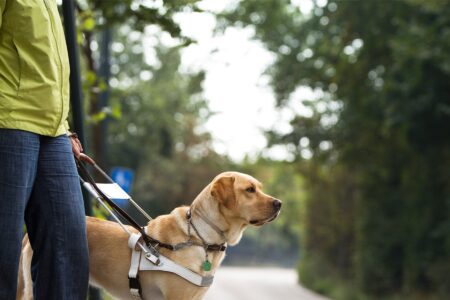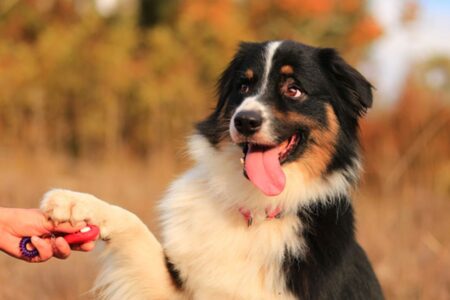
Dog Training Guide: Easy Ways to Train a Naughty Dog
We all will agree that dog training is important for the development, behavior, and well-being of our furry companions. A well-behaved and obedient dog not only brings joy and companionship to our lives but also improves the overall quality of life for both us and our pets. However, training a dog can be a difficult task, especially for first-time dog owners but not to worry, this is where a dog training guide comes in handy.
Dog training guide helps provide you with step-by-step instructions, tips, techniques, and strategies on how to effectively train your dog. These easy ways to train your dog are based on scientific principles of animal learning and behavior which aim to help you understand your pet’s behaviors, establish a strong bond, and train them to be well-mannered and obedient.
Let us dive into some of the easy ways to train a dog, and various methods, and offer you practical advice for common behavior issues your dog might display. Whether you are a new dog owner or looking to improve your dog’s behavior, this guide will provide you with the necessary knowledge and tools to raise a happy and well-behaved dog.
Dog Training Guide: Easy Ways to Train a Naughty Dog
1. Consistency:
Dogs thrive on repetition and routine. It is important to establish consistent rules and boundaries for your dog and to enforce them every time as it will send a clear message to your dog about what behaviors are acceptable and what are not.
2. Positive reinforcement:
Rewarding your dog with treats, praise, and affection is a powerful tool in training a naughty dog. Instead of scolding or punishing bad behavior, focus on rewarding good behavior. This will encourage your dog to repeat the desired behavior.
3. Exercise and mental stimulation:
Naughty behavior can sometimes be a result of pent-up energy and boredom. Make sure your dog gets enough physical exercise and mental stimulation to keep them engaged and content. This will reduce the likelihood of them acting out.
4. Redirect bad behavior:
Instead of scolding or punishing your dog for naughty behavior, redirect their attention to a more appropriate activity. For example, if your dog is chewing on furniture, give them a chew toy instead.
5. Be patient and calm:
It’s important not to lose your temper or become frustrated when training a naughty dog. Dogs respond better to calm and patient training techniques. Take breaks if needed and always end on a positive note.
6. Seek professional help:
If your dog’s behavior is persistent and difficult to manage, seek the help of a professional dog trainer. They can provide personalized training techniques and guidance to help you address your dog’s specific issues.
7. Be a good leader:
Dogs are natural pack animals and look to their owners for guidance and leadership. Establish yourself as the pack leader by setting rules and boundaries and consistently enforcing them. This will help your dog see you as the one in charge and follow your lead.
8. Use command words consistently:
Choose simple and clear command words for your dog and use them consistently as it will help your dog understand what you want them to do and make training easier.
9. Socialize your dog:
Some dogs may act out due to fear or anxiety in social situations. It is important to socialize your dog from a young age to new people, places, and other dogs to make them more confident and well-behaved in social settings.
10. Be understanding:
Remember, dogs are not perfect and will make mistakes. It’s important to be understanding and patient with them as they learn and grow. Celebrate small victories and be consistent with your training to see long-term results.
What is Naughty Behavior in Dogs?
Naughty behavior in dogs refers to any behavior that is seen as disruptive, disrespectful, or disobedient by their owners or trainers. These behaviors include excessive jumping, chewing on furniture or belongings, barking excessively, ignoring commands, being aggressive towards people or other animals, digging in the yard, or tearing up carpets or furniture.
SEE ALSO: Great Dane Pitbull Mix: All You Need To Know
Why Do Dogs Have These Behaviors?
- Boredom: Dogs are social animals and require mental and physical stimulation. When left alone for long periods without adequate exercise or attention, they may resort to engaging in destructive behaviors such as chewing or digging.
- Lack of Training: Dogs, especially young ones, need proper training to learn acceptable behaviors. Without proper guidance, they may engage in behaviors that humans consider naughty, such as jumping, pulling on the leash, or barking excessively.
- Separation Anxiety: Dogs can become anxious when left alone, leading to destructive behaviors. This is especially common in dogs who have been adopted from shelters or have a history of being abandoned.
- Fear or Stress: Dogs may also exhibit naughty behaviors as a response to fear or stress. For example, they may bark, growl, or try to escape when confronted with unfamiliar situations or loud noises.
- Lack of Socialization: Dogs that are not socialized at a young age may have difficulty interacting with other dogs or people which can lead to aggressive behaviors or a lack of impulse control, which may manifest as naughty behaviors.
- Medical Issues: Some behaviors, such as excessive barking, chewing, or urination, may be a sign of an underlying medical condition. It is essential to rule out any health problems before addressing behavioral issues.
- Attention-Seeking: Dogs may engage in naughty behaviors to seek attention from their owners. If a dog learns that barking, whining, or jumping results in attention, they may repeat these behaviors to get what they want.
- Natural Instincts: Dogs are descendants of wolves and retain some of their predatory instincts. This can explain why they may chase after smaller animals, dig through trash, or chew on furniture.
- Lack of Exercise: Dogs require daily exercise to release pent-up energy. Without sufficient physical activity, they may become hyperactive and exhibit destructive or attention-seeking behaviors.
- Reinforcement: In some cases, owners may inadvertently reinforce naughty behaviors by giving in to their dog’s demands. For example, if a dog learns that barking at the dinner table results in getting scraps, they are likely to repeat this behavior.
What Are the Five Golden Rules of Dog Training?
- Consistency: Training should be done consistently and regularly, using the same commands and methods every time.
- Patience: Dogs learn at different rates, so it’s important to be patient and not get frustrated if they don’t grasp a concept right away.
- Positive Reinforcement: Rewarding desired behaviors with treats, praise, and affection is more effective than punishment in training.
- Clear Communication: Dogs don’t understand our language, so it’s important to use clear and consistent body language, tone of voice, and commands to communicate what we want them to do.
- Timing: Rewarding or correcting a dog’s behavior needs to happen in the moment, so they understand what they are being rewarded or corrected for. Delayed reinforcement or punishment will not effectively reinforce or correct behaviors.
Signs of Naughty Behavior in Puppies
- Chewing furniture or household items
- Jumping on people or furniture
- Barking excessively
- Growling or nipping during play
- Potty accidents inside the house
- Digging in the yard
- Begging for food or stealing food from the table
- Stealing or hiding objects
- Pulling on the leash during walks
- Marking or urinating in the house
- Nipping or biting when being handled or groomed
- Ignoring commands or being unresponsive to training
- Chasing or harassing other animals
- Excessive energy and hyperactivity
- Boredom-induced destructive behavior.
Puppy Training Schedule by Age
- 10-14 Weeks-Expose the Puppy to their New Environment and Teach Basics.
- 14-16 Weeks-Socialization.
- 16-18 Weeks–More Exploring.
- 18-20 Weeks–Meeting Children.
- 20-22 Weeks – Meeting Other Dogs.
Dog Training Tips for Beginners
- Start with Basic Commands: Begin your dog training with basic commands like “sit”, “stay”, “come”, and “down” as they are the basics for more complex commands and will make it easier for your dog to understand and follow your instructions.
- Use Positive Reinforcement: Dogs respond best to positive reinforcement techniques such as treats, praise, and affection. Give rewards every time your dog follows a command to reinforce good behavior.
- Be Consistent: Consistency is key in dog training. Use the same command words and hand gestures every time and make sure all family members are on the same page to avoid confusion for your dog.
- Keep Training Sessions Short: Dogs have a short attention span so keep training sessions short, preferably less than 15 minutes. This will prevent your dog from getting bored and allow them to focus better.
- Don’t Punish Bad Behavior: Punishing your dog for bad behavior is not an effective training method. It can lead to fear and aggression in your dog. Instead, redirect their behavior with a command and reward them for good behavior.
- Socialize Your Dog: This is crucial for a well-behaved and happy dog. Introducing your dog to different people, animals, and environments can help them become more comfortable and well-rounded.
- Be Patient and Positive: Training takes time and patience. Don’t get frustrated if your dog doesn’t learn a command right away. Stay positive and continue to work with your dog.
- Use a Clicker: A clicker is a small handheld device that makes a clicking sound when pressed. This is a useful tool in training as it marks the behavior that you want your dog to repeat. Pair the click with a treat for positive reinforcement.
- Train in Different Environments: Once your dog has mastered commands at home, practice in different environments such as the park or on a walk as it will help the dog learn to follow commands in any situation.
- Seek Professional Help: Don’t hesitate to seek help from a professional trainer if you are having trouble training your dog as they can provide personalized training techniques and advice to help you and your dog succeed.
Dog Training Methods
- Positive Reinforcement: This method involves using rewards (like treats or praise) to reinforce desired behaviors and ignore or redirect undesirable behaviors. This encourages the dog to repeat the desired behavior to receive the reward.
- Clicker Training: This is a type of positive reinforcement method that uses a clicking sound to mark the desired behavior. The dog learns to associate the sound with a reward and will repeat the behavior to earn the reward.
- Operant Conditioning: This method involves using consequences (rewards or punishments) to shape a dog’s behavior. Positive consequences are used to encourage desired behaviors, while negative consequences discourage undesirable behaviors.
- Classical Conditioning: This technique pairs a neutral stimulus (such as a word or hand signal) with a positive or negative experience to create an association. For example, a dog can be trained to associate a clicker sound with a treat, so the clicker itself becomes a conditioned reinforcer.
- Mirror Training: This method involves using another well-trained dog to demonstrate desired behaviors, which the other dog then mimics as this can be useful in teaching social behaviors or more complex behaviors.
- Relationship-Based Training: This approach focuses on building a strong bond and communication with the dog to establish trust and respect. This method relies on positive reinforcement and clear communication to train the dog.
- Electronic Collar Training: Also known as remote training, this method involves using an electronic collar with a remote control to deliver a mild static correction when the dog performs an undesired behavior. This method should only be used under the guidance of a professional trainer.
- Koehler Method: Developed by dog trainer William Koehler, this method uses a combination of positive and negative reinforcement to train dogs. It involves precise commands and strict discipline to achieve desired behaviors.
- Natural Dog Training: Based on the idea that dogs instinctively respond to visual and energetic cues, this method involves using body language and energy to communicate and train dogs as it focuses on developing a strong relationship between you and your dog by using the dog’s natural drives and instincts to guide training.
- Alpha Dog or Dominance-Based Training: This training method is based on the belief that dogs are pack animals and need a dominant owner to establish control. It often involves using physical corrections to assert dominance over the dog. This approach is controversial and can lead to fear and aggression in dogs and so, it is not recommended by most modern dog trainers.
How to Reward Your Dog for Doing What You Ask
While human praise is naturally rewarding for dogs, verbal interaction can sometimes become routine and less effective in motivating desired behavior. Fortunately, meaningful ways of rewarding your dog for obedience are easily accessible and can add value to your relationship and training routine.
- Treats: One of the most common ways to reward your dog for obedience is with treats. Keep a steady supply of small, easily digestible, and healthy treats on hand while training. Give your dog a treat every time they complete a command or behave in the way you want them to.
- Praise: Dogs respond to verbal praise and positive reinforcement. Be generous with your words of encouragement and praise when your dog performs a desired behavior. Mix up your tone and inflection to keep your dog engaged and excited.
- Toys: Dogs love playtime, and using toys as a reward can be a fun and effective way to motivate your dog. Use your dog’s favorite toy as a reward when they successfully obey a command or perform a desired behavior.
- Physical Affection: Dogs crave physical affection and giving them a good belly rub, back scratch, or a hug can be a meaningful reward for them. Use physical affection as a reward along with treats and praise for an extra boost of motivation.
- Games: Adding a game element to your training routine can make it more enjoyable for your dog and help reinforce their obedience. For example, after your dog successfully obeys a command, you can play a short game of fetch or tug of war as a reward.
- Release Words: Release words are words or phrases that signal to your dog that they have completed a task and can now relax and play which can be a powerful form of reward for your dog, as it allows them to understand when they have completed a desired behavior and can look forward to a break or fun activity.
- Clicker Training: Clicker training is a method that uses a special device that makes a clicking sound as a way to pinpoint and reinforce a desired behavior and this sound is followed by a reward, such as a treat or praise, making it an effective way to reward your dog for their obedience.
SEE ALSO: Apricot Standard Poodle: Ultimate Guide to the Perfect Family Dog
FAQs
Q. How do I get my dog to stop being naughty?
Below are 4 things you can do to keep your dog’s energy high from being naughty
- Crating. Crate Training is the number one way to manage your high-drive dog when you are not able to watch them.
- Lots of Activities. The time you do spend with your dog should be spent burning off all that energy.
- Chew toys.
- Place Command.
Q. What are the 7 most important dog commands?
- Sit
- Stay
- Come
- Down
- Leave it
- Heel
- Off
Q. How do you train a rebellious dog?
Use some of the commands like pull, release, etc immediately if the problem behavior is repeated.


